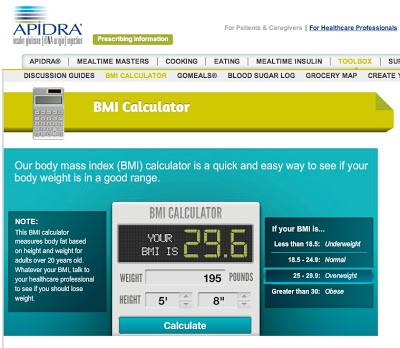Almost everyone makes this New Year’s resolution: lose weight! I also resolve to lose weight this year. But after seeing the results of a new study published in JAMA, I am modulating that goal: remain “overweight” by keeping on a few extra pounds.
The study (see here), which was performed by the Centers for Disease Control, was a meta-analysis of 97 studies that provided a combined sample size of more than 2.88 million individuals and more than 270,000 deaths. The researchers found that “overweight” and even slightly “obese” people had a 5-6% lower risk of death than people of normal weight.
In the U.S. approximately 30% of people are classified as “overweight” as determined by a well-known and widely used “health risk” indicator: Body Mass Index (BMI). According to the National Heart, Lung, and Blood Institute (NHLBI), BMI is a “measure of body fat based on height and weight that applies to both adult men and women.” NHLBI defines these BMI categories:
- Normal weight = 18.5-24.9
- Overweight = 25-29.9
- Obesity = BMI of 30 or greater
At least one pharmaceutical company with a product that treats a weight-related illness such as type 2 diabetes includes a BMI calculator on its drug.com website. Sanofi Diabetes goes so far as to use “BMI Calculator” as a keyword to serve up search ads such as the following:
Loss Leader Search Ad
This visible URL of this ad (www.rapid-acting-insulin.com) actually takes you to the Apidra branded website home page (www.apidra.com), not directly to the BMI calculator, which is among the tools on the site. I call this a “loss leader” search ad, meaning it entices you into the “store” (drug.com website) with a free offer (e.g., health risk calculator), but forces you to search through the site for the calculator while being bombarded with promotional messages for an expensive product; i.e., Rx drug. In this case the drug is Apidra, a rapid-acting insulin for adults with type 2 diabetes.
NOTE: The above ad is also an example of “URL redirection,” which is a technique for making a web page available under many URLs. This technique is generally not allowed in Google Adwords, but the pharmaceutical has a “free pass” from Google to use redirection to avoid including the brand name in the visible URL of the ad and thus avoid FDA regulation. For more on that, see “Should Google Allow Pharma an Exception to Its Ban on Redirect URLs?“
I eventually found the BMI calculator on the apidra.com site and calculated the weight I would have to maintain in order to be in the “sweet spot” with the lowest risk of death. According to the study mentioned above, that “sweet spot” is a BMI between 25 and 29.9, which is associated with a “hazard ratio” of all-cause mortality equal to 0.94 (compared to 1.00 for normal weight people with BMI below 25). In my case, I need to weigh at most 195 lbs to be in that sweet spot:
The Right Thing to Do Viz-a-Viz Online Risk Calculators
BMI calculators and similar “health risk” tools promoted by pharma marketers often do not indicate the source of the algorithm used to calculate the results (see here, for example). I am sure that the Sanofi BMI calculator is based on the same algorithm used by NHLBI, which is fine. Sanofi and other pharma companies, IMHO, should follow best ehealth ethical practices such as the eHealth Code of Ethics and disclose what sources the site has used for its risk calculators, with references or links to those sources.
According to an editorial accompanying the research cited above, “Not all patients classified as being overweight or having grade 1 obesity, particularly those with chronic diseases, can be assumed to require weight loss treatment. Establishing BMI is only the first step toward a more comprehensive risk evaluation.” One of the “chronic diseases” mentioned is diabetes. “The presence of a wasting disease, heart disease, diabetes, renal dialysis, or older age are all associated with an inverse relationship between BMI and mortality rate, an observation termed the obesity paradox or reverse epidemiology. The optimal BMI linked with lowest mortality in patients with chronic disease may be within the overweight and obesity range.”
All this brings into question the appropriateness of BMI as and indicator of mortality (the JAMA editorial is titled “Does Body Mass Index Adequately Convey a Patient’s Mortality Risk?”). One might even question the appropriateness of using BMI calculators as “loss leaders” to promote diabetes Rx drugs such as Apidra.










![6 Digital Tools at the Center of Healthcare Digitalization [INFOGRAPHIC]](http://ec2-54-175-84-28.compute-1.amazonaws.com/pharma-mkting.com/wp-content/uploads/2021/04/6DigitalTools_600px-100x70.jpg)




